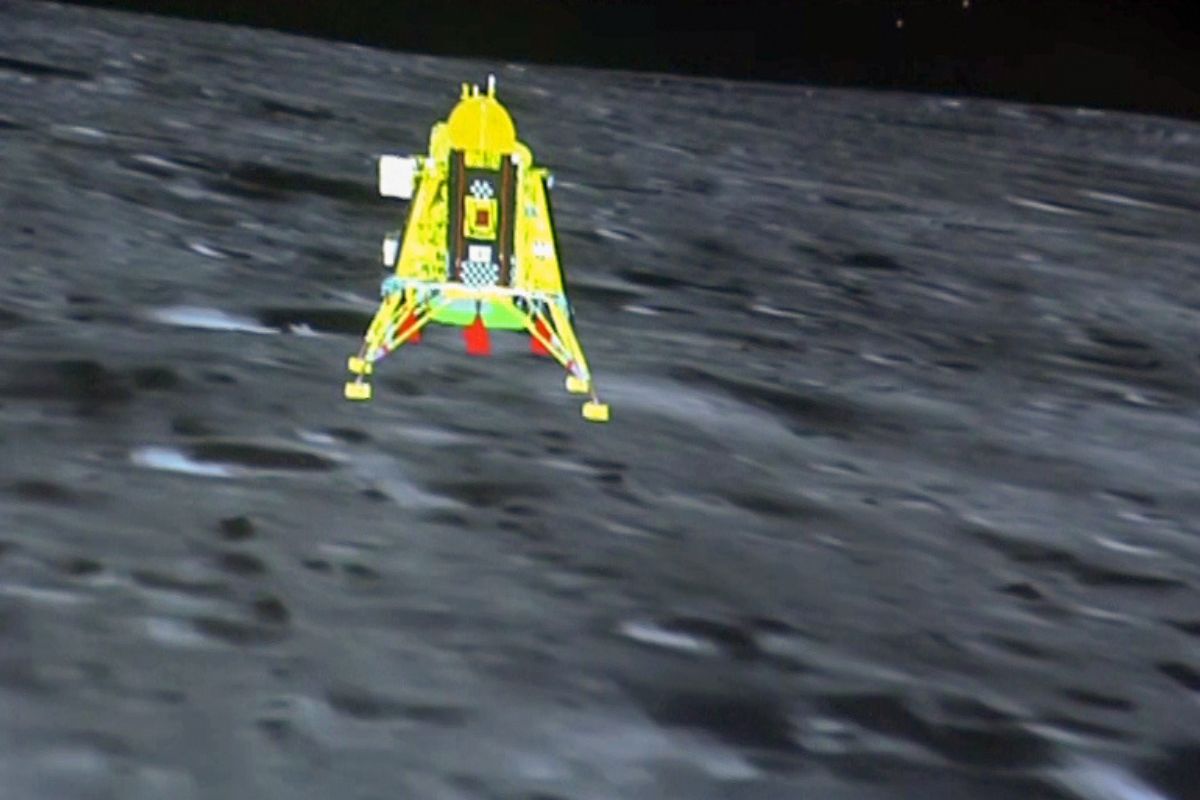Back Home
The recent return of astronauts Butch Wilmore and Sunita Williams from an unexpectedly prolonged mission aboard the International Space Station (ISS) marks yet another milestone in humanity’s evolving relationship with space.

The Chandrayaan-3 lander Vikram's soft-landing on the Moon's South Pole during Chandrayaan-3 Mission
After a lunar night of two weeks, Chandrayaan-3’s lander and rover will soon be awakened. On September 2, the Indian Space Research Organisation (ISRO) declared on X (previously Twitter) that it had “safely parked” the lander Vikram and the rover Pragyan next to each other in sleep mode with their research instruments off. The lander briefly fired its engines to move around 16 inches on the lunar surface in a brief “hop” before going to sleep.
The lander-rover pair battery, according to ISRO, is fully charged. “The solar panel is positioned to catch the light on September 22, 2023, when the next sunrise is anticipated. It had said on X (formerly Twitter) that the receiver was kept on.
Advertisement
Additionally, the space agency has stated that if they do not awaken by September 22nd, they “will forever stay there as India’s lunar ambassador.”
Advertisement
Vikram Lander’s hop experiment, according to ISRO, “exceeded mission objectives.”
A safe and soft landing, moon rover roving, and in-situ scientific investigations were the stated goals of Chandrayaan-3, India’s third lunar mission.
Since making a successful soft landing on the moon on August 23, the Vikram lander has been resting at the Shiv Shakti point close to the South Pole.
India became the first nation to accomplish the feat historically and put an end to the disappointment following the Chandrayaan-2’s crash landing four years prior.
After the US, China, and Russia, India became the fourth nation to make a successful landing on the moon’s surface.
Advertisement
Former National Aeronautics and Space Administration (NASA) astronaut and Columbia University professor, Mike Massimino, engaged with students of PM SHRI Kendriya Vidyalaya, here on Thursday, leaving them inspired with his experiences in space and insights into the future of space exploration.
The Indian Space Research Organisation (ISRO) announced that the Ocean Colour Monitor (OCM) sensor on its EOS-06 satellite has captured phytoplankton concentration on a global scale.
Advertisement
